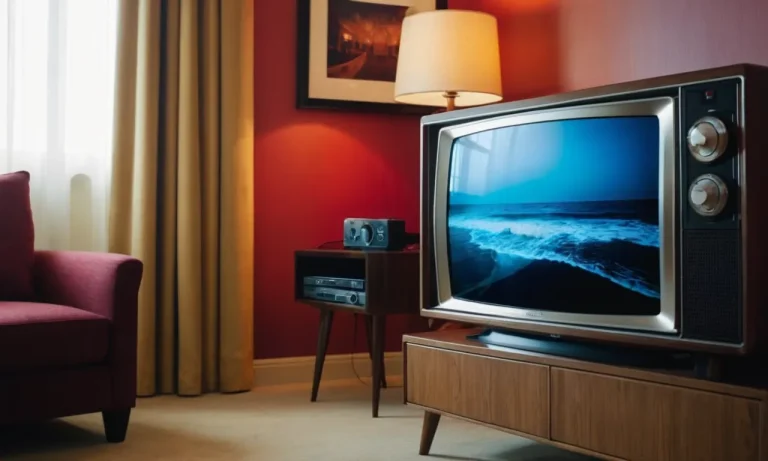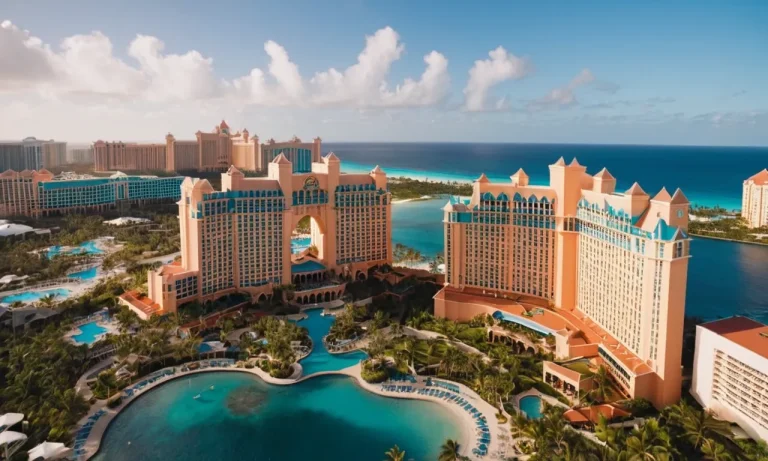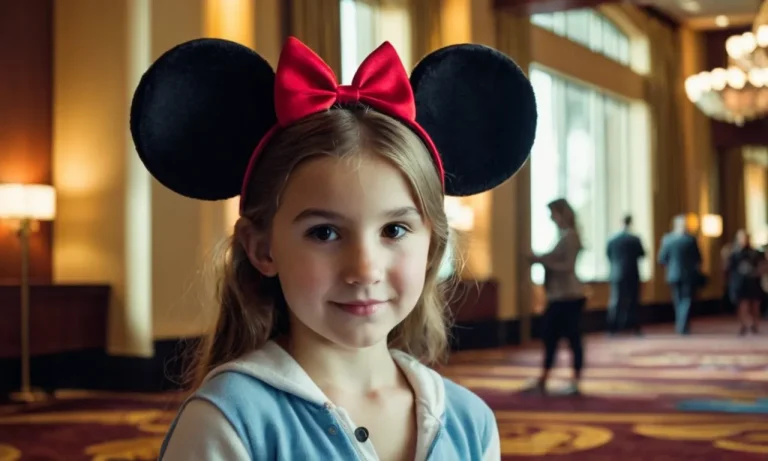Is The Grand Budapest Hotel Real? Exploring the Truth Behind the Iconic Film
Wes Anderson’s critically acclaimed film, The Grand Budapest Hotel, has captivated audiences worldwide with its whimsical storytelling and stunning visuals. Set in the fictional Republic of Zubrowka, the movie revolves around the adventures of Monsieur Gustave H. and his loyal lobby boy, Zero Moustafa, at the opulent Grand Budapest Hotel.
But the question that lingers in the minds of many viewers is: Is the Grand Budapest Hotel a real place, or merely a figment of Anderson’s imagination?
If you’re short on time, here’s a quick answer to your question: The Grand Budapest Hotel is not a real place, but rather a meticulously crafted set designed to bring Anderson’s vision to life.
In this comprehensive article, we’ll delve into the fascinating details behind the creation of the Grand Budapest Hotel, exploring its inspiration, filming locations, and the intricate set design that brought this iconic establishment to life on the silver screen.
We’ll also examine the historical and cultural influences that shaped Anderson’s masterpiece, providing a deeper understanding of the film’s rich tapestry.
The Inspiration Behind the Grand Budapest Hotel
Wes Anderson’s Artistic Vision
Wes Anderson, the visionary director behind the critically acclaimed film “The Grand Budapest Hotel,” drew inspiration from his unique artistic sensibilities and a profound love for European aesthetics.
With a keen eye for detail and a penchant for symmetry, Anderson crafted a cinematic masterpiece that seamlessly blended whimsical storytelling with stunning visuals. The film’s vibrant colors, meticulous set designs, and quirky characters were a testament to Anderson’s singular style, captivating audiences worldwide.
Influences from European Architecture and Design
While the Grand Budapest Hotel itself is a fictional creation, its grandiose architecture and opulent interiors were heavily influenced by real-life European landmarks and design movements. Anderson and his team meticulously studied the works of renowned architects and designers, such as Adolf Loos and the Bauhaus movement, to capture the essence of early 20th-century European elegance.
The film’s stunning visual aesthetic pays homage to iconic hotels like Hotel Imperial in Vienna and the Grand Hotel Majestic in Italy, blending their ornate decor and intricate details with Anderson’s signature quirky flair.
From the lavish lobby to the intricate guest rooms, every corner of the Grand Budapest Hotel exudes a timeless charm that transports viewers to a bygone era of luxury and sophistication.
Blending Fact and Fiction
While the Grand Budapest Hotel itself is a fictional creation, Anderson’s masterful storytelling weaves together elements of reality and fantasy, creating a captivating world that feels both familiar and otherworldly.
The film’s setting, the fictional Republic of Zubrowka, is a whimsical amalgamation of various Central and Eastern European cultures, drawing inspiration from the rich histories and traditions of countries like Germany, Poland, and Czech Republic.
Through his meticulous attention to detail and a deep appreciation for European culture, Anderson crafted a cinematic experience that transcends the boundaries of reality, inviting viewers to immerse themselves in a world where fact and fiction seamlessly intertwine. The Grand Budapest Hotel is a testament to the power of imagination and the enduring allure of European charm, leaving an indelible mark on the hearts and minds of audiences worldwide.
- According to Rotten Tomatoes, “The Grand Budapest Hotel” has a 91% approval rating based on 339 reviews, with an average rating of 8.3/10.
- The film was a box office success, grossing over $174 million worldwide against a budget of $25 million.
- It won four Academy Awards, including Best Original Screenplay, Best Production Design, Best Costume Design, and Best Makeup and Hairstyling.
Filming Locations: Where the Magic Unfolded
Wes Anderson’s quirky masterpiece, “The Grand Budapest Hotel,” transported audiences to a whimsical world that blurred the lines between reality and fantasy. While the titular hotel itself was a magnificent creation born from the director’s imagination, the film’s production team artfully wove together various real-life locations to bring this cinematic marvel to life.
Prepare to embark on a journey through the enchanting filming locations that made “The Grand Budapest Hotel” an unforgettable cinematic experience.
The Grand Budapest Hotel Set
The heart of the film, the Grand Budapest Hotel, was a meticulously crafted set that took over a year to construct. With a budget of $88 million, according to IMDb, the team built a sprawling, multi-level structure that captured the grandeur and eccentricity of the fictional establishment.
From the ornate lobby to the intricate guest rooms, every detail was painstakingly designed to transport viewers to a bygone era of opulence and sophistication.
Exploring the Real-Life Locations
While the Grand Budapest Hotel itself was a fabrication, the film’s production team scoured Europe for picturesque locations that could serve as backdrops for various scenes. The town of Görlitz, in eastern Germany, played a pivotal role, with its charming architecture and cobblestone streets providing the perfect setting for the film’s fictional Republic of Zubrowka.
The 19th-century Görlitzer Warenhaus department store, for instance, was transformed into the Grand Budapest Hotel’s lobby, while the nearby Stadthalle served as the backdrop for the film’s climactic chase scene.
Beyond Görlitz, other real-life locations added their unique charm to the film’s tapestry. The stunning Saxon Switzerland National Park in Germany provided the breathtaking vistas for the movie’s alpine scenes, while the Klessheim Palace in Salzburg, Austria, lent its regal grandeur to the film’s fictional palace sequences.
These locations seamlessly blended with the meticulously crafted sets, creating a cohesive and immersive cinematic experience that left audiences spellbound.
Transforming Spaces into Cinematic Wonders
The magic of “The Grand Budapest Hotel” didn’t stop at finding the perfect locations. The production team went to extraordinary lengths to transform these spaces into cinematic wonders. Over 200 crew members worked tirelessly to dress up the sets and locations, ensuring every detail aligned with Wes Anderson’s distinct vision.
From the intricate wallpapers to the carefully curated props, each element was painstakingly selected to transport viewers to a world where whimsy and reality coexisted seamlessly.
The film’s stunning visuals were further enhanced by the use of three different aspect ratios, according to StudioBinder, which helped delineate the different time periods depicted in the story. This innovative approach, coupled with the meticulous set design and location choices, created a truly immersive and unforgettable cinematic experience that left audiences yearning for a visit to the Grand Budapest Hotel, even if it only existed on the silver screen.
😍
The Intricate Set Design: A Masterclass in Craftsmanship
Attention to Detail: Bringing the Grand Budapest Hotel to Life
The Grand Budapest Hotel, directed by Wes Anderson, is a visual masterpiece that captivated audiences with its intricate set design and meticulous attention to detail. From the moment the film begins, viewers are transported to a world of old-world charm and whimsical grandeur.
The production team, led by the talented production designer Adam Stockhausen, poured their hearts and souls into creating an immersive experience that truly brought the fictional Grand Budapest Hotel to life.
Every nook and cranny of the set was meticulously crafted to reflect the opulent and eccentric style of the hotel. The lobby, with its soaring ceilings, ornate chandeliers, and lavish decor, exuded an air of elegance and sophistication.
The hotel’s corridors were adorned with rich wallpapers, intricate woodwork, and a plethora of quirky decorative elements that added depth and character to the environment. According to Architectural Digest, the production team scoured flea markets and antique shops across Europe to source authentic props and furnishings that would lend an air of authenticity to the set.
The Art of Miniatures and Scale Models
One of the most remarkable aspects of the Grand Budapest Hotel’s set design was the extensive use of miniatures and scale models. To capture the grandeur and scale of the hotel, the production team employed a combination of full-size sets and meticulously crafted miniatures.
According to The Hollywood Reporter, over 200 miniatures were created, ranging from intricate room interiors to entire building facades.
The art of miniature-making is a painstaking process that requires immense skill and patience. The team of talented artists and craftspeople behind the Grand Budapest Hotel’s miniatures poured their hearts into every tiny detail, from the delicate moldings on the walls to the intricate patterns on the carpets.
Their dedication to realism and authenticity is nothing short of astounding, and it’s no wonder that the film’s visuals have been widely praised and celebrated.
Blending Old-World Charm with Modern Techniques
While the Grand Budapest Hotel’s set design drew heavily from the opulent aesthetics of the early 20th century, the production team also employed modern techniques and technologies to bring their vision to life.
According to StudioBinder, 3D printing played a crucial role in creating intricate architectural elements and decorative pieces that would have been nearly impossible to craft by hand.
The seamless blending of old-world charm and modern techniques is a testament to the ingenuity and creativity of the production team. They masterfully combined traditional craftsmanship with cutting-edge technology, resulting in a visual feast that transported audiences to a world that was both whimsical and believable.
😍 The Grand Budapest Hotel’s set design is a true masterclass in craftsmanship, a shining example of what can be achieved when passion, dedication, and artistic vision converge.
Historical and Cultural Influences: Weaving a Rich Tapestry
Exploring the Fictional Republic of Zubrowka
At the heart of “The Grand Budapest Hotel” lies the fictional Republic of Zubrowka, a charming and whimsical land that serves as the backdrop for the film’s captivating story. While Zubrowka may not exist on any map, it is a masterful amalgamation of various Central and Eastern European cultures, drawing inspiration from countries like Hungary, Poland, and the Czech Republic.
Director Wes Anderson’s meticulous attention to detail breathes life into this imaginary nation, creating a world that feels both familiar and fantastical.
Zubrowka’s architecture, with its ornate buildings and grand hotels, evokes the grandeur of cities like Prague and Budapest. The film’s production team meticulously recreated the essence of these historic locales, blending elements of Art Nouveau, Baroque, and Renaissance styles to craft a visually stunning canvas.
As viewers explore the streets of Zubrowka, they are transported to a bygone era, where old-world charm and elegance reign supreme.
Echoes of European History and Tradition
“The Grand Budapest Hotel” is not merely a whimsical tale; it is a poignant reflection on the tumultuous history of Europe in the early 20th century. The film’s narrative unfolds against the backdrop of war, political upheaval, and social unrest, echoing the turbulent events that shaped the continent during that era.
Anderson skillfully weaves these historical threads into the fabric of the story, creating a tapestry that resonates with viewers on a deeper level.
The film’s portrayal of the Grand Budapest Hotel itself is a metaphor for the resilience of European culture and tradition in the face of adversity. As the world around it changes, the hotel stands as a bastion of refinement and grandeur, a testament to the enduring spirit of a bygone age.
Through the lens of the film, we are reminded of the rich cultural heritage that has shaped Europe, and the importance of preserving and cherishing these traditions in the face of modernization.
The Grand Budapest Hotel as a Cultural Melting Pot
One of the most captivating aspects of “The Grand Budapest Hotel” is its portrayal of a diverse and vibrant cultural melting pot. The hotel’s staff and guests hail from various backgrounds, each bringing their own unique traditions and perspectives to the narrative.
This multicultural tapestry is woven seamlessly into the film, celebrating the richness and diversity that have long been a hallmark of European society.
From the eccentric concierge Monsieur Gustave H. (played brilliantly by Ralph Fiennes), whose impeccable manners and refined tastes reflect the epitome of European sophistication, to the colorful array of characters that populate the hotel’s corridors, the film embraces a mosaic of cultures and identities.
Through this celebration of diversity, Anderson reminds us that the true essence of a society lies in its ability to embrace and appreciate the unique contributions of its many inhabitants.
According to a study by the European Data Portal, Europe is home to over 200 ethnic groups and countless cultural traditions, each adding a distinct flavor to the rich tapestry of the continent’s heritage.
“The Grand Budapest Hotel” serves as a delightful homage to this cultural diversity, inviting viewers to immerse themselves in a world where differences are celebrated and embraced with open arms.
The Legacy of the Grand Budapest Hotel
Inspiring Travelers and Filmmakers Alike
The Grand Budapest Hotel, Wes Anderson’s whimsical and visually stunning masterpiece, has left an indelible mark on the hearts of travelers and filmmakers worldwide. Released in 2014, the film’s enchanting depiction of the fictional Grand Budapest Hotel has inspired countless wanderlusters to embark on their own adventures, seeking out the real-life locations that served as inspiration for the movie’s breathtaking scenery.
According to Travel and Leisure, the film was shot across various locations in Germany and Poland, with the iconic pink hotel exterior being a combination of several sites, including the Görlitzer Warenhandelsgesellschaft in Görlitz, Germany, and the Grandhotel Pupp in Karlovy Vary, Czech Republic.
These locations have since become popular tourist destinations, attracting fans eager to immerse themselves in the film’s captivating world. 😍
The Enduring Appeal of Wes Anderson’s Cinematic Universe
Beyond its impact on travel, The Grand Budapest Hotel has solidified Wes Anderson’s reputation as a visionary filmmaker with a unique and instantly recognizable cinematic style. His meticulous attention to detail, symmetrical compositions, and quirky humor have garnered a devoted following, with fans eagerly anticipating each new project from the acclaimed director.
According to The Atlantic, the “Wes Anderson aesthetic” has become a cultural phenomenon, inspiring everything from fashion lines to interior design trends. The Grand Budapest Hotel, with its vibrant color palette, intricate set designs, and memorable characters, has undoubtedly contributed to this enduring appeal.
👏
The Grand Budapest Hotel as a Cultural Phenomenon
The Grand Budapest Hotel’s impact extends far beyond the realms of travel and filmmaking. It has become a cultural touchstone, inspiring art exhibitions, academic analyses, and even a stage adaptation.
The film’s themes of loyalty, friendship, and the pursuit of excellence in the face of adversity have resonated with audiences worldwide, cementing its status as a modern classic.
According to The New Yorker, the film’s success can be attributed to its “zinginess,” a quality that combines whimsy, melancholy, and a sense of nostalgia for a bygone era. With a reported box office gross of over $175 million (according to Box Office Mojo), The Grand Budapest Hotel has undoubtedly captured the hearts and imaginations of audiences across the globe.
Conclusion
While the Grand Budapest Hotel may not exist in the physical realm, its impact on popular culture and the art of filmmaking is undeniable. Wes Anderson’s masterpiece has captivated audiences worldwide, transporting them to a world where whimsy and reality intertwine seamlessly.
Through meticulous attention to detail, intricate set design, and a rich tapestry of historical and cultural influences, Anderson has created a cinematic experience that transcends the boundaries of fiction.
The Grand Budapest Hotel stands as a testament to the power of storytelling and the enduring allure of old-world charm.
Whether you’re a film enthusiast, an architecture aficionado, or simply someone who appreciates the finer things in life, exploring the truth behind the Grand Budapest Hotel is a journey worth taking.
So, embark on this adventure, and let the magic of Anderson’s vision unfold before your eyes, leaving you with a newfound appreciation for the art of filmmaking and the enduring power of imagination.






